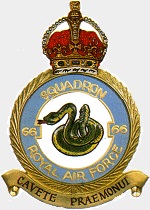Corgi AA39211 RAF Supermarine Spitfire Mk. I Fighter - R6800/LZ-N, Squadron Leader Rupert 'Lucky' Leigh, No.66 Squadron, Gravesend, England, September 1940 (1:72 Scale)
"Never in the field of human conflict was so much owed by so many to so few."
- British Prime Minister Winston Churchill, commenting on the British airmen in the Battle of Britain
 The Spitfire is the most famous British aircraft of all time. Although less numerous than the Hawker Hurricane, it is remembered as the sleek, thoroughbred fighting machine that turned the tide during the Battle of Britain. The Spitfire was among the fastest and most maneuverable prop-driven fighters of World War II, serving in virtually every combat theater.
The Spitfire is the most famous British aircraft of all time. Although less numerous than the Hawker Hurricane, it is remembered as the sleek, thoroughbred fighting machine that turned the tide during the Battle of Britain. The Spitfire was among the fastest and most maneuverable prop-driven fighters of World War II, serving in virtually every combat theater.
Supermarine designer Reginald Mitchell created this small, graceful, elliptical-wing fighter with eight guns in the wings that were able to fire without being hindered by the propeller. The immortal Spitfire thus became not merely one of the best-performing fighters of all time, but also one of the best-looking. Although never employed as a long-range escort, the Spitfire was a champion in an air-to-air duel. Spitfires routinely dived at the speed of sound, faster than any of the German jets.
A carrier-based version, called the Seafire, was a winner in its own right, serving valiantly on convoy routes during World War II. The Seafire 47 was even used in the early stages of the Korean War, before it was replaced by more modern jet aircraft.
Pictured here is a 1:72 scale replica of a RAF Supermarine Spitfire Mk. I fighter that was piloted by Squadron Leader Rupert 'Lucky' Leigh, who was attached to No.66 Squadron, then deployed to Gravesend, England, during September 1940.
Sold Out!
Dimensions:
Wingspan: 6-inches
Length: 4-1/2-inches
Release Date: August 2017
 Historical Account: "Pinnacle of Aviation Technology" - For young British pilots in the late 1940s, the most exciting and enigmatic aircraft that they could possibly hope to fly was the new Supermarine Spitfire. The absolute pinnacle of aviation technology at that time, the Spitfire was a thoroughbred in every sense of the word and simply a beautiful airplane to look at.
Historical Account: "Pinnacle of Aviation Technology" - For young British pilots in the late 1940s, the most exciting and enigmatic aircraft that they could possibly hope to fly was the new Supermarine Spitfire. The absolute pinnacle of aviation technology at that time, the Spitfire was a thoroughbred in every sense of the word and simply a beautiful airplane to look at.
Just a few short months after the Spitfire entered RAF service, it would be called upon to fight for the very survival of Britain and the free world, as swarms of Luftwaffe aircraft launched massed attacks against RAF airfields and strategic targets across southern England. The handsome Spitfire would have to bare its teeth and take on the feared Messerschmitt Bf 109!


